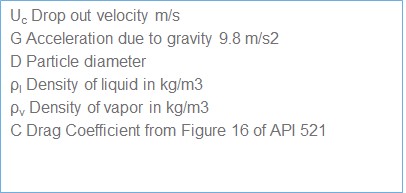- 1. Types of Flare
- 2. Segregation of Flares
- 3. Flare Knock-Out Drum
- 4. Flare KOD Liquid Removal
- 5. Flare KOD sizing depends on two aspects
- 6. Liquid Seal Drum
- 7. Purge reduction seals
- 8. Flare Purge system
- 9. Flare stack
- 10. Flare Structure
- 11. Flare Tip
- 12. Ringlemann Chart
- 13. Pilot burner
- 14. Pilot Ignition
- 15. Other Accessories
Flaring is defined as a process of controlled burning of exhaust gases which generates heat and noise. Flaring is a common practice in oil/gas exploration, production and processing operations. A flare system consists of a flare stack and pipes that feed gas to the stack. The type and amount of gas or liquids in the flare stack governs the sizing & brightness of the flare.
There are many function & reason for flaring, few reasons for flaring are:
- During well production testing after drilling is completed
- For safety and during emergencies and maintenance
- For managing gas during compression and processing
- Flaring at well sites to recover oil
1. Types of Flare
- Elevated Flare
- Ground Flare
- Enclosed Flare
- Open Flare
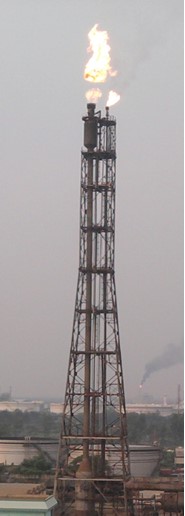
Elevated Flare
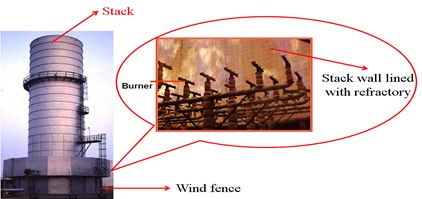
Enclosed Flare
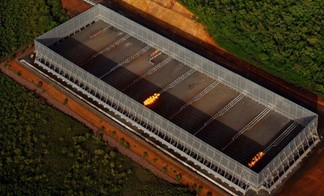
Open Flare
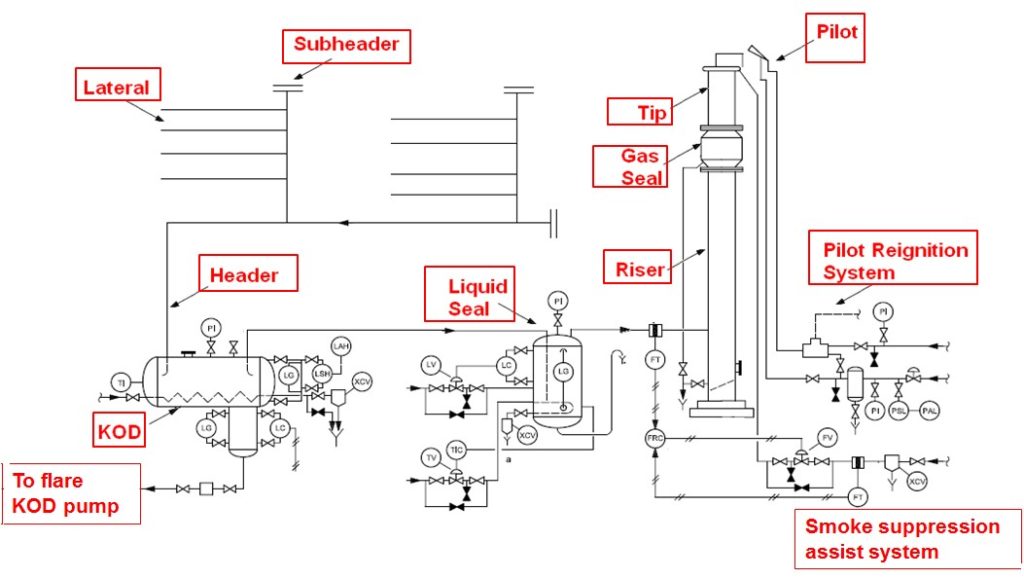
Typical Flare System with Elevated Flare
2. Segregation of Flares
- Service
- Acid gas flare
- Cold dry flare
- Warm wet flare
- Pressure
- Atmospheric
- Low pressure
- High pressure
3. Flare Knock-Out Drum
-
- Objective
- Separate bulk liquid from gas
- Limit liquid droplet size entrained with gas to the flare
- Provide adequate residence time for liquid
- Sizing basis
- Based on API 521
- Separation of liquid droplet size of 300-600 microns considering the design case for the flare
- 20-30 minutes of liquid hold-up time based on a relief case that results in maximum liquid
- No internals to facilitate separation
- Many orientations / options possible, horizontal KODs most preferred
- Objective
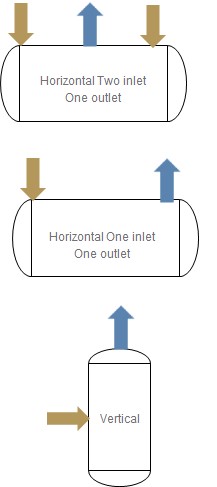
Typical Inlet/Outlet for Flare KO Drum
-
- Flare Knock-Out Drum Elevation
- KO drum elevation decides pipe rack elevation based on 1:500 slope of main flare header
- Flare Knock-Out Drum Elevation

Flare KO Drum elevation
-
- KO drum elevation determined by pump NPSH requirement
- To reduce pipe rack elevation options are
- Reduce KOD elevation (option 1)
- Use vertical can pump
- Locate pump within pit
- Locate KO drum within pit
- Use intermediate KO drums (option 2)

Flare KO Drum elevation arrangement (Option 1)

Flare KO Drum elevation arrangement (Option 2)
4. Flare KOD Liquid Removal
Remove liquid from flare KOD after relief to avoid overfill during future relief event
- Options
- Draining to evaporation pond or closed drain drums
- Liquid removal by flare KOD pumps
- Heater to be installed in KOD where freezing, pour point issues exist
- Rate of liquid removal to consider frequency and amount of liquid release
- High level in flare KOD to be considered for plant shutdown
- Sizing of Flare KOD
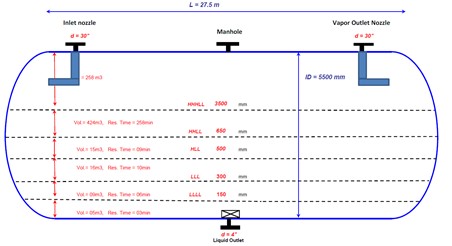
Flare KO Drum
- LLLL shall be sufficiently high to avoid any sludge deposition impacting LT nozzle (150 mm in above figure not correct, consider 300 mm minimum for services which are not clean).
- LLLL shall be minimum 700-300 in case flare drum electrical heaters need to be installed.
- LLLL Level at which pump trips.
- LLL Level at which both pumps stops
- HLL Level at which first pump starts
- HHLL Level at which second pump starts
- HHHLL Level at which entire plant goes into pressurized trip.
5. Flare KOD sizing depends on two aspects
- Liquid Hold up requirement during a major liquid or two phase release.
- Sufficient distance shall be available between inlet device bottom and HHHLL. It is possible to have manually initiated depressurization even after HHHLLL. Any possible liquid shall be accommodated above HHHLL.
- Distance between HLL and HHHLL shall be designed to accommodate maximum liquid release scenario(?). Some standards this distance is between HHLL and HHHLL.
- Residence time required for drop of liquid particles of 300-600 micron size.
- Liquid particles separate
- When the residence time of the vapor or gas is equal to or greater then the time required to travel the available vertical height at the dropout velocity of the liquid particles and
- When the gas velocity is sufficiently low to permit the liquid dropout to fall. This vertical height is usually taken as the distance from the maximum liquid level.
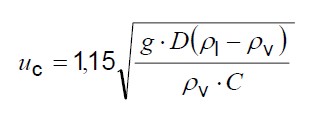
6. Liquid Seal Drum
- Objective
- Prevent flashback from flare tip back to flare headers
- Avoid air ingress into flare system during sudden temperature changes leading to condensation and maintain positive system pressure
- Use
- Used in flare gas recovery systems
- Staged flaring between enclosed flare and full size emergency flare
- Design specifications
- Water as liquid sealing fluid not recommended for extremely cold releases; water-glycol mixtures of sufficient concentration used instead
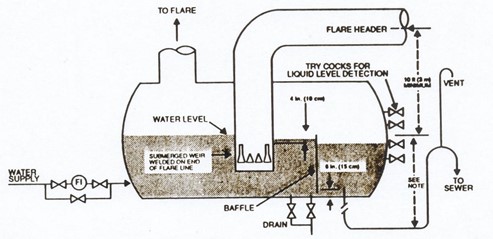
Liquid Seal Drum
7. Purge reduction seals
- Objective
- Prevent air infiltration into flare system at low flow rates
- Reduce amount of continuous purge gas injection into flare stack
- Design options
- Buoyancy seal (molecular / density seal)
- Velocity seal (fluidic seal)
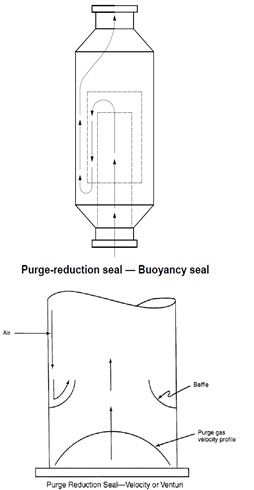
Purge Reduction Seal
8. Flare Purge system
- Objective
- Prevent air infiltration into flare system at low flow rates
- Prevent vacuum formation in flare headers and system following steaming or large relief event
- Design specification
- Continuous purge rate with velocity in stack
- 1-5 fps : without molecular seal
- 01 : with molecular seal
- 02-0.04: with velocity seal
- Approximate purge flow rate can be calculated using section 7.3.3.3 of API 521.
- Continuous purge rate with velocity in stack
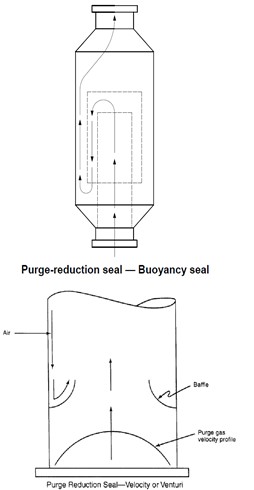
Purge Reduction Seal
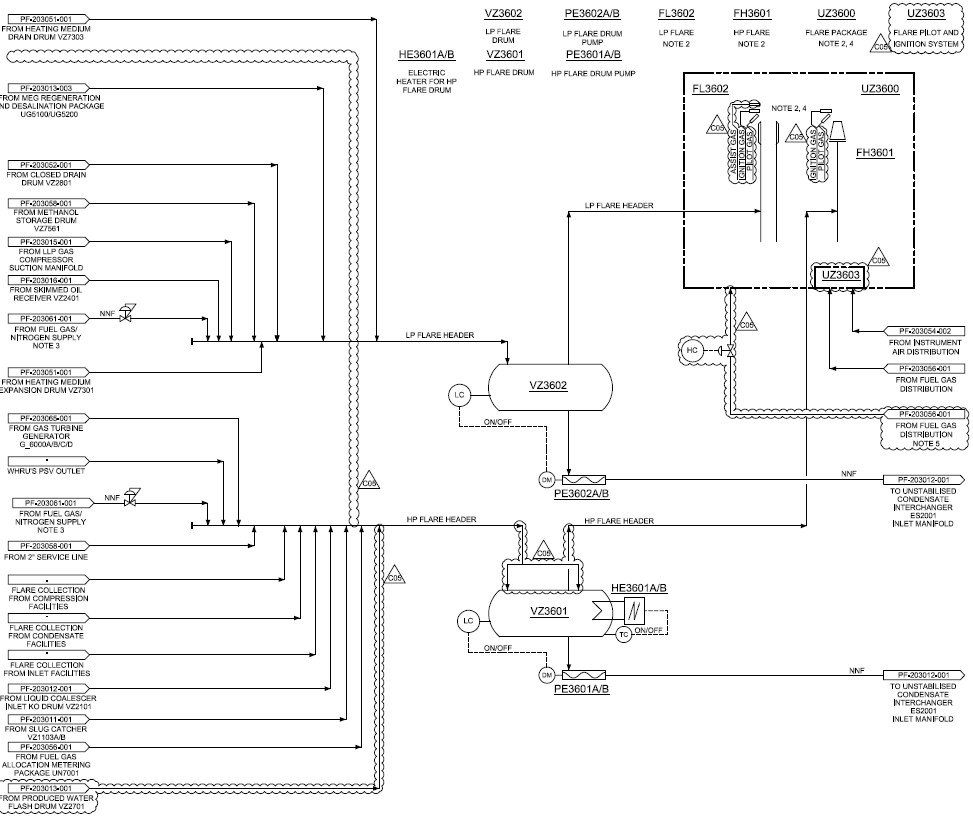
Flare P&ID
9. Flare stack
-
- Objective
- Combustion of relief gases at elevation to minimize radiation exposure to personnel/ equipment/ structure
- Ensure adequate dispersion of un-burnt hydrocarbons and toxic components
- Objective
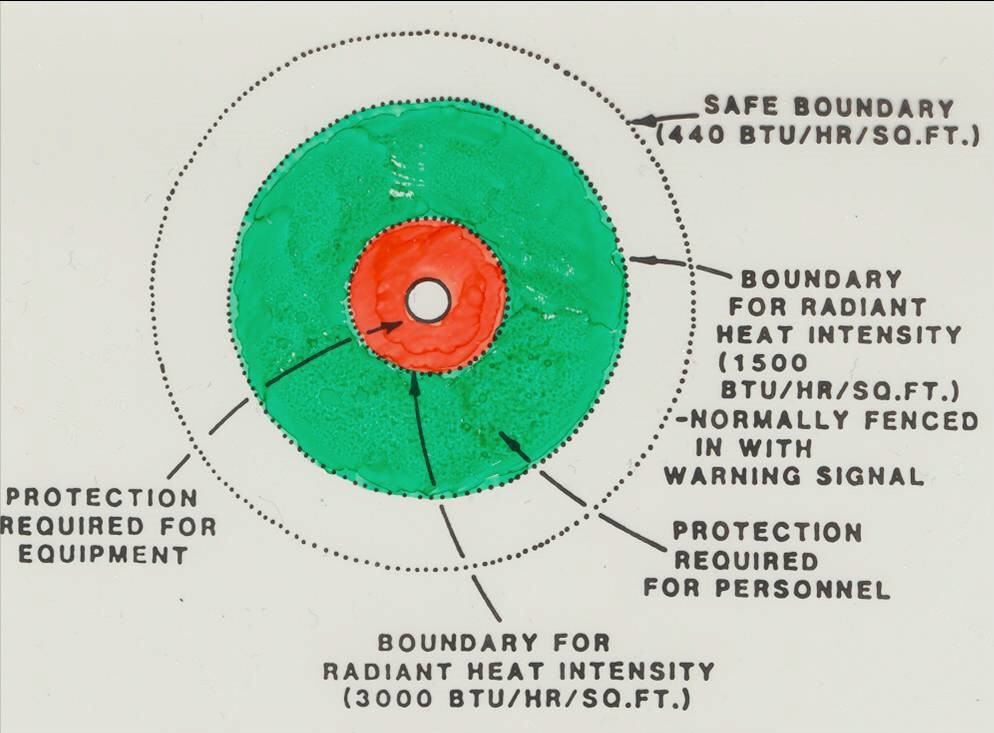
Flare protection
- Design considerations
- Radiation: Limit radiation, either continuous and peak, on off-site properties and persons, equipment, buildings and personnel on the installation. Applicable to impacted area, restricted area and equipment lay-out.
- Flammable gas: Avoid ignition of a flammable gas cloud released from a cold vent or in case of flare flame out.
- Toxic hazards: (Mainly for H2S and SO2, but not limited to) limit the risk of a toxic gas cloud to reach off-site population, provide means of alarm and adequate protection to personnel present in the restricted area.
- Noise: Limit both continuous and peak noise
- Stack height is determined by HSE group based on permissible radiation level as per project philosophy or API 521.
- Taller stack will result in smaller sterile zone.
- Locate process plant upwind of flare.
10. Flare Structure
- Self supported flare stack
- Guy wired supported flare stack
- Derrick supported flare stack
- More than one flare may be supported on the same structure
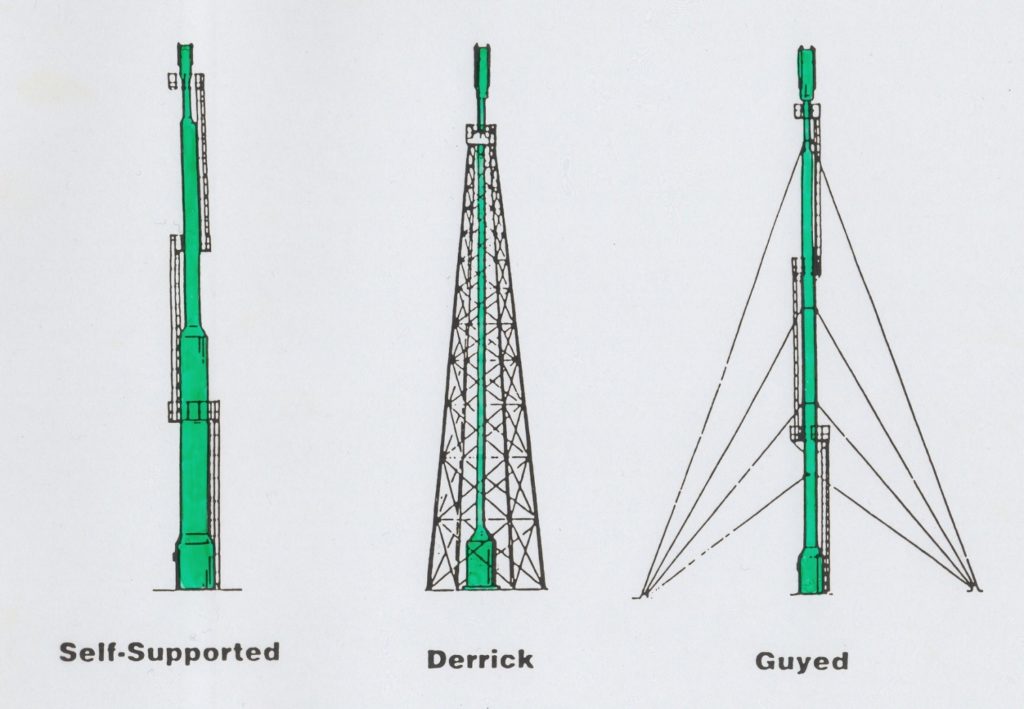
Flare Stack Support
11. Flare Tip
- Produce desired destruction/combustion efficiency of maximum specified relief gas
- Establish and maintain proper ignition
- Pilot gas /Pilot burners/ Ignition system
- Ensure stable combustion
- Windshield
- Retention rings
- Result in smokeless operation at normal continuous flows or at100% flows
- Steam
- Air (high pressure or low pressure)
- High pressure water
- No external medium, maintain high pressure at tip by staging
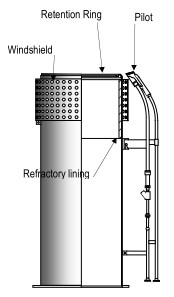
Flare Tip
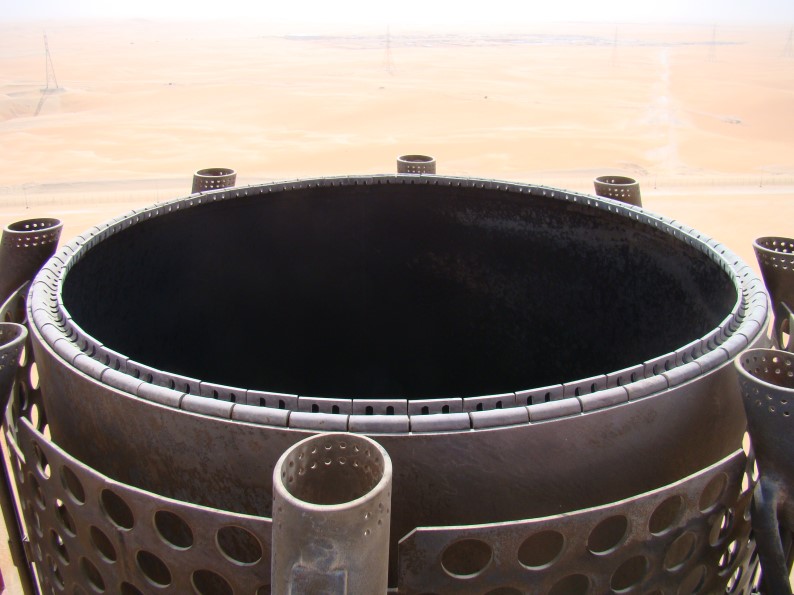
Flare tip
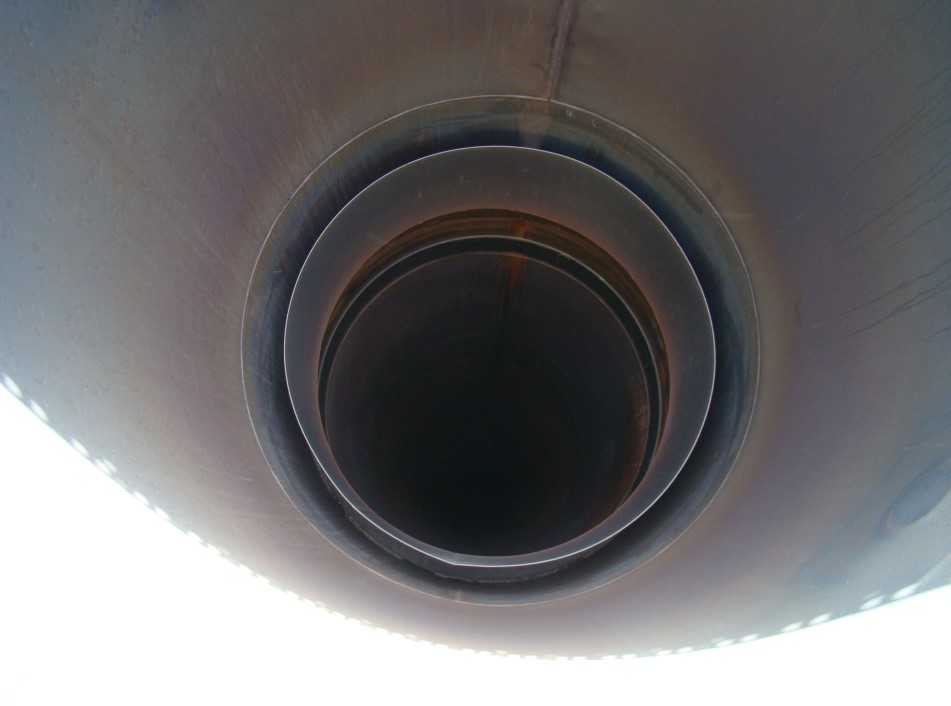
Flare Tip: Velocity Seal (top view)
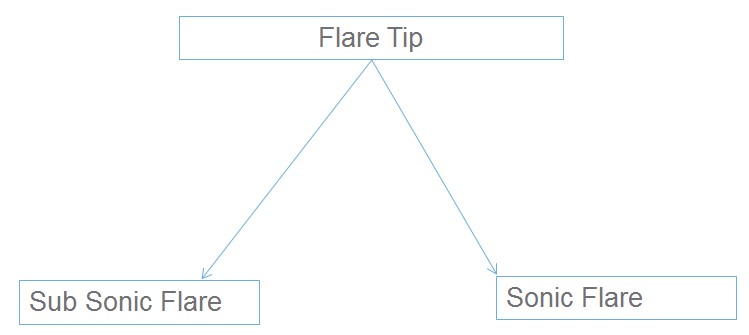
- Based on velocity of gas exit from tip, flare tips are considered as sonic and subsonic (pipe flare) type. This is the term used by process designer for high pressure flares and low pressure flares.
- General stack pressure drops are as given below.
- Sonic flare – 2 to 4 bar
- Subsonic flare – 0.2-0.5 bar
- Open Pipe flare tips: These are used for combustion of gases that do not produce smoke, gases with a low heating value, or for installations where smokeless combustion of heavy hydrocarbons is not required. These flare tips are one of the lower capital cost options for safe disposal of waste gases. In general these kind of flares have tips with very low pressure drop.
- Open pipe flare tips with steam injection: Steam injection is provided reduce the smoke formation.
- Open pipe flare tip with high pressure gas injection: This will increase the turbulence at flare tip and reduce the smoke formation. Fuel gas can be generally used as assist gas. Fuel gas injection can be either continuous or initiated manually based on monitoring of flare tip.
- Air assisted flare tip: When smokeless flaring is desired and neither steam nor assist gas is available, blowers can be used to inject combustion air directly into the waste gas stream as it exits the flare tip. Combustion efficiency of flared gas is increased by installing air blower which will reduce smoke formation.
- Multiple nozzle type flares: They are used where high flare gas pressures are available (1 barg and up) and where it is preferred to have some smokeless burning capability and also lower radiation levels. These kinds of flares are used for HP flare application. They have good combustion efficiency and less chances of smoke formation.
- Coanda flare tip: The Coanda effect is a gas-adhesion principle that dramatically enhances the combustion process, resulting in maximum destruction of waste gases. Coanda Effect occurs when gas is passed over and adheres to a carefully profiled, curved surface, creating a near vacuum that pulls in substantial amounts of air. The air turbulently mixes with the gas flow, resulting in high-efficiency combustion.
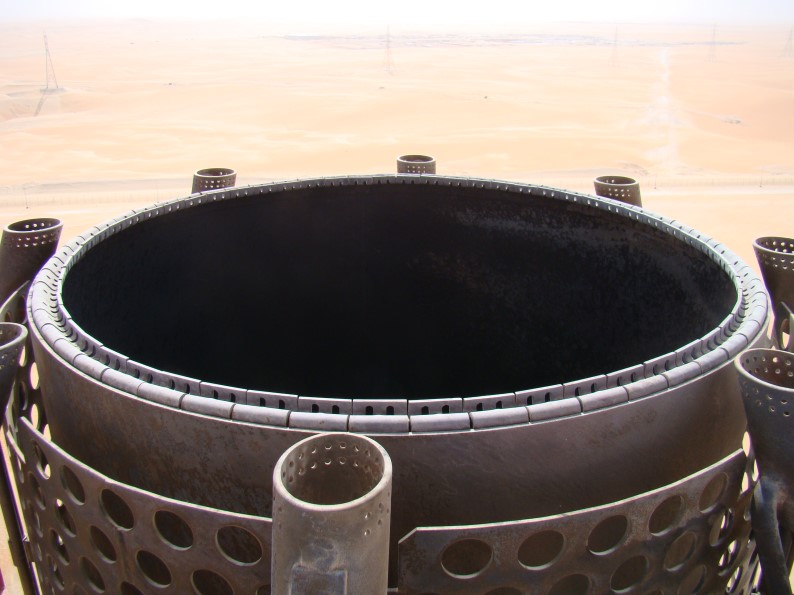
Open Pipe Flare
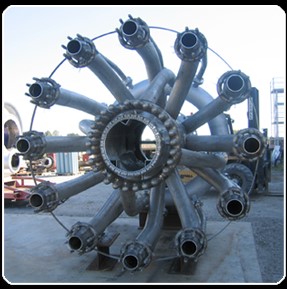
Multi Nozzle Flare
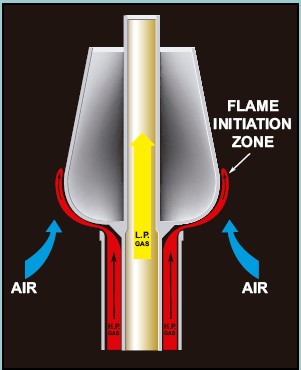
Coanda Flare
12. Ringlemann Chart
- A series of charts, numbered 0 to 5, that simulate various smoke densities by presenting different percentages of black.
- Ringelmann No. 0 is clear smoke
- Ringelmann No. 5 is 100 percent black.
- Ringelmann No. 1 is equivalent to 20 percent black
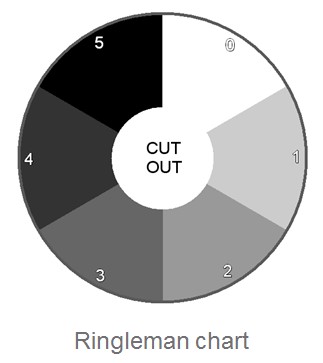
Ringleman Chart
13. Pilot Burner
- Objective
- Provide flame for reliable ignition of main flare gas at all times
- Design specifications
-
- Pilot system to comply with API 537
Minimum number of pilots Flare burner outer diameter, DN 1 (2 for toxic gas) Up to 200 2 >200 to 600 3 >600 to 1050 4 >1050 to 1500 To be agreed with purchaser >1500 - Pilots designed to remain lit and capable of being relit at wind speeds up to 160 km/h under dry conditions
-
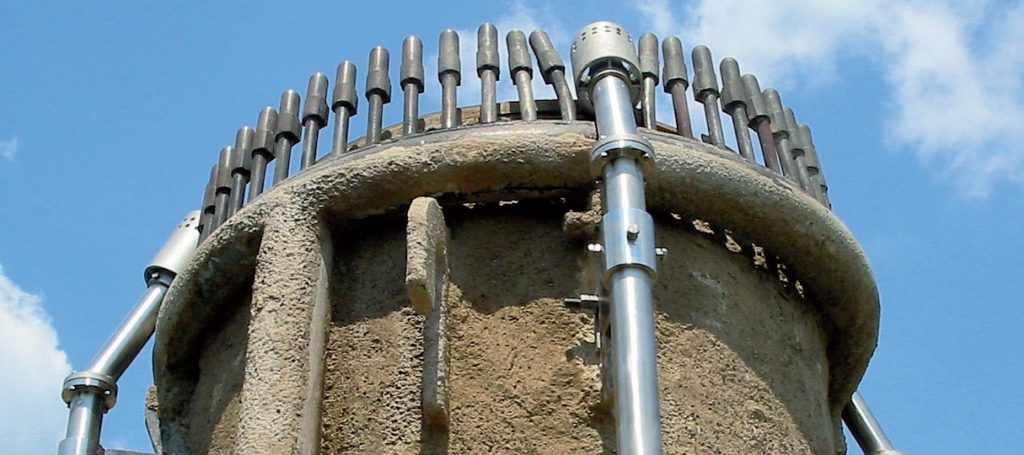
Pilot gas line
14. Pilot Ignition
-
- High Energy Ignition (HEI)
- Electrode capable of high energy or high voltage discharge near pilot tip
- Does not require propagation of a flame front as in FFG system
- Does not require compressed air, self aspirating pilots
- Simple and easy to use and automate, require little training or maintenance. Re-ignition takes few seconds
- Shutdown of flare system required for maintenance
- Back up FFG ignition (when using HEI) may be considered for
- Very tall flares that are difficult to access
- Flare systems that can be off line only once in more than 3-5 years
- Offshore platforms in corrosive and salt environments
- High Energy Ignition (HEI)
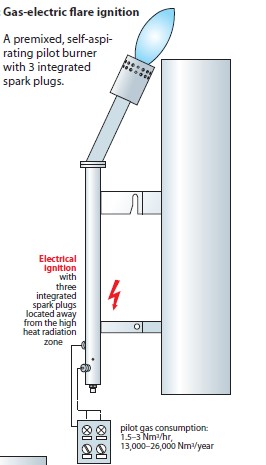
Electrical Ignition Panel
- Flame Front Generator (FFG)
- Ignition line from panel to flare pilot filled with flammable fuel gas- air mixture and spark introduced. Mixtures ignited and flame front travels through piping to ignite pilot at flare tip
- FFG panel located at grade
- Panel operated manually or automated to reignite of pilot flame out detection. Re-ignition can take several minutes
- Moisture accumulation can lead to corrosion, flame extinguishment Ignition lines to be heat traced
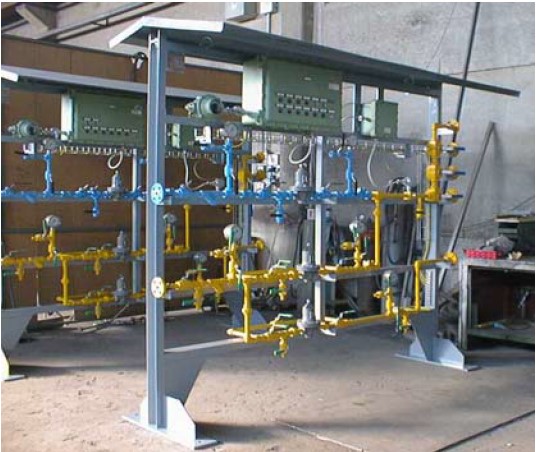
FFG Panel
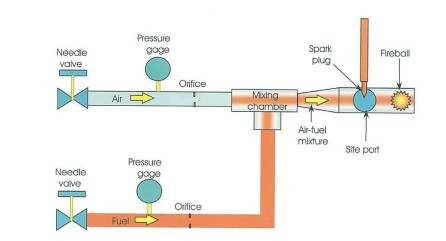
FFG System
15. Other Accessories
- Flow measurement
- Monitoring relief devices leaks during normal operation
- Assess flaring of gases due to pressure control operations
- Note relief flows for assessing flare system adequacy checks and potential for flare gas recovery
- Non-intrusive ultrasonic flow meters with wide range and no pressure drop is preferred
- Smokeless flaring : medium control
- Proper steam or air control is required
- By measuring gas being flared and adjusting steam rate / blower capacity
- Detection smoke using infra-red analyzers
- Proper steam or air control is required
- Aircraft Warning Lights
- Required when flare heights exceed 61m or when site is close to airport
- Type and number based on regulations
